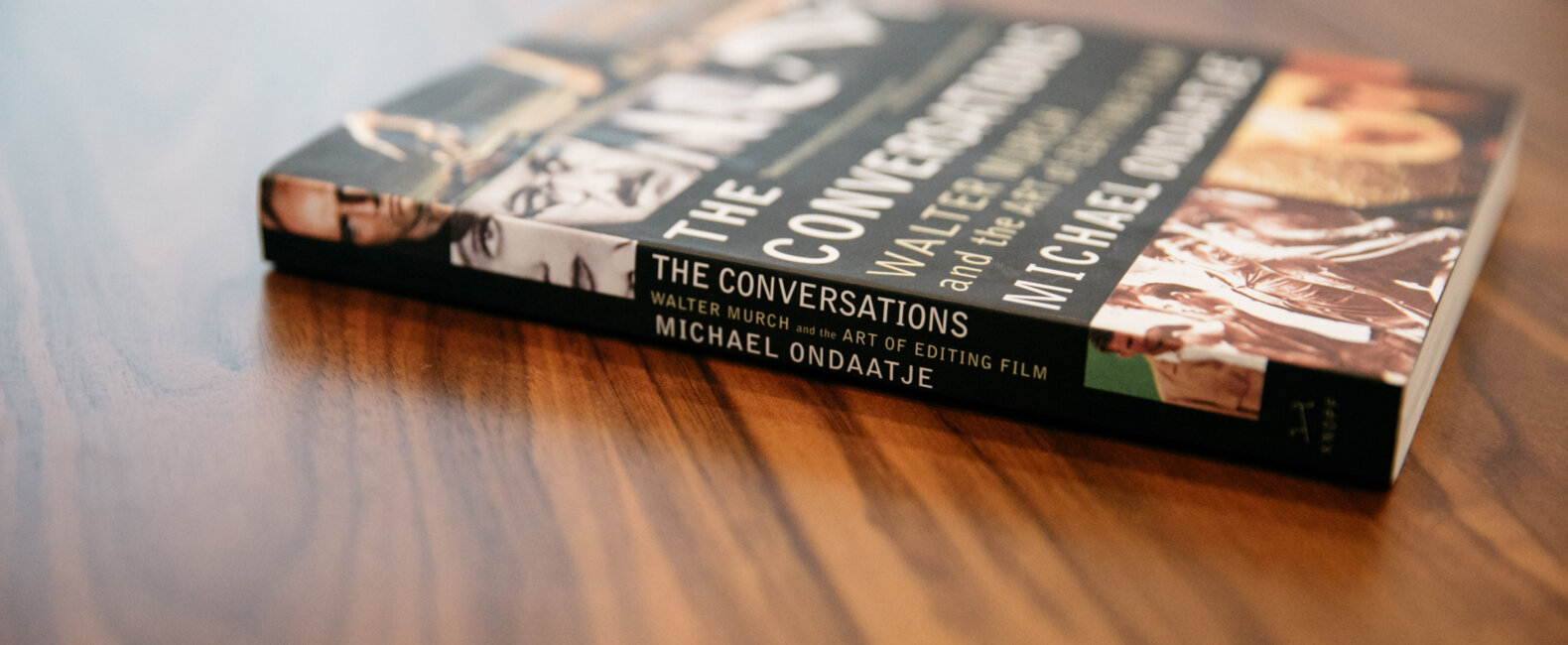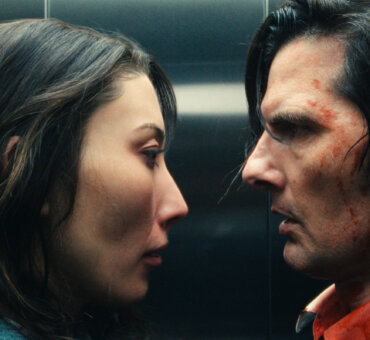Film editors are like soccer goalies: They’re playing the same game as everybody else, but with a different set of rules. While most of filmmaking is highly collaborative, the editor often works alone. While most of filmmaking is about accumulating material, the editor’s job is to cut away as much material as possible, to find the form hidden in the mass. In many ways, they’re working in the opposite direction as everyone else, but toward the same goal: telling a great story, making a great film.
In the book The Conversations: Walter Murch and the Art of Editing Film, novelist Michael Ondaatje goes deep inside the unconventional mind of one of the most revered editors in filmmaking history. Together, they break down some of Murch’s most iconic films (e.g., The Godfather, The English Patient, The Conversation), sometimes in painstaking detail. But from these details, a larger picture emerges of an editor at the top of his game. It will change the way you see not just his films, but all films.
Read some of our favorite bits below.
1. How to Begin: Editing with Eyes Half Closed
While an editor’s job can be highly logical at times, it can be dangerous to overthink things early on. Your first job is getting the material down. Laying things out. Don’t worry about solving problems or being interesting. Don’t worry about fixing things. Just do the grunt work. Most of the problems you’re so worried about will take care of themselves. Murch calls this phase in the process “editing with eyes half closed.” He explains:
“You have to give everything the benefit of the doubt. On the other hand, you can’t be completely without opinion, otherwise nothing would ever get done. Putting a film together is all about having opinions: this not that, now not later, in or out…. The point is, if you squash this down, then you push the whole curve of the film down, whereas it might have righted itself by its own mysterious means. If you try to correct the film while putting it together, you end up chasing your own tail. What you really want to do when first assembling a film is to put it together, right from the beginning, without second-guessing anything. Don’t try to be too smart too early.”
So don’t panic when you sit down and see nothing but problems. Put one scene down after another. Don’t doubt yourself. Don’t overthink. Keep your eyes half closed. Take deep breaths.
2. Don’t Solve Every Problem
When it comes time to solve the problems in your film, be leery of solving them all. You don’t have to answer every question or fill in every logical hole. In fact, the best films purposefully leave a few answers blank. This ambiguity allows the audience to participate in the creation of the film, by answering the questions themselves. Murch:
“And one of the most fruitful paradoxes, I think, is that even when a film is finished, there should be unsolved problems. Because there’s another stage, beyond the finished film: when the audience views it. You want the audience to be co-conspirators in the creation of this work…. If by some chemistry you actually did remove all ambiguity… I think it would do the film a disservice.”
But, Murch explains, this is not an excuse to be lazy, to be purposefully vague or intentionally ambiguous. In fact, the paradox is that you have to work as if every problem needs to be solved. Murch again:
“You can’t say, I don’t want to solve this because it’s got to be ambiguous. If you do that, then there’s a sort of haemorrhaging of the organism.”
You must set out to solve every problem and answer every question. And then you mustn’t let yourself succeed.
3. Use Music to Enhance Emotion, Not Create It
People don’t like being told what to do. And they hate being told what to feel. This, Murch explains, is why we must be very careful about how we use music. Left unchecked, it can act as an emotional steroid: a short cut that ultimately causes permanent damage.
“The correct use of music… is as a collector and channeler of previously created emotion, rather than the device that creates the emotion. … I think in the long run this approach generates emotions that are truer because they come out of your direct contact with the scene itself, and your own feelings about the scene — not feelings dictated by a certain kind of music. … Most movies use music the way athletes use steroids. There’s no question that you can induce a certain emotion with music — just like steroids build up muscle. It gives you an edge, it gives you a speed, but it’s unhealthy for the organism in the long run.”
Emotions have to be earned the hard way: through scenes, story, conflict, and character. Don’t take the short cut, no matter how tempting it may be. It will always lead you astray. You might not find your way back.
4. Find the Right Frame
While making a film, one of the most basic and difficult questions an editor has to answer a thousand times over is, When do I cut? No matter how great a scene is, the editor has to decide the exact right moment to cut away from it. To move on to the next. For Murch, this is the most “rhythmically important decision” an editor makes, and he’s developed a method for finding this moment that he claims is “the most significant thing that I think I do.” Here’s the gist:
“To determine that end frame, I look at the shot intently. It’s running along, and then at a certain point I flinch — it’s almost an involuntary flinch, an equivalent of the blink. That flinch point is where the shot will end. … I have to be able to hit the mark each time. That’s the proof to me that I’m responding to something that’s beyond my control, that has to do purely with thought and emotion, with rhythm and musicality. … If I hit frame 17 and then frame 19 the next time, that means something in my approach is wrong.”
Do this 1,000 times, and you’ll have cut together your movie.
5. Fail at Greater and Greater Things
Don’t worry: everything you do is going to be a failure. This is the comforting advice Murch leaves us with at the end of The Conversations. But it’s not as bad as it sounds. In fact, the way Murch puts it, it almost sounds like a good thing:
“There’s that wonderful line of Rilke’s, ‘The point of life is to fail at greater and greater things.’ Recognizing that all our achievements are doomed, in one sense… but in another sense the purpose of our journey is to go farther each time. So you’re always trying things out in every film you make, with the potential of failure. I think we’re always failing, in Rilke’s sense — we know there’s more potential that we haven’t realized. But because we’re trying, we develop more and more talent, or muscles, or strategies to improve each time. Every film has lessons to teach us — if we receive those lessons in the right way.”
Failure is guaranteed. The learning is up to you.
Also published on Medium.






